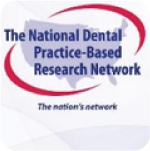Your Questions
What kind of toothpaste should I use?
Most toothpaste on the market today contains fluoride, which works best for most people. Children under the age of two should not use toothpaste with fluoride since they swallow the majority of the paste. After they're two or older, a pea sized amount can be used if the child can spit the extra amount out. Whitening toothpastes are fine, but don’t expect much whitening, although they may help get rid of surface staining. Keep in mind, though, that many people report increased tooth sensitivity when using whitening toothpastes. If you have sensitive teeth, sensitivity toothpastes can be great; they must be used regularly to be effective.
What does my insurance cover?
It depends. Most insurance companies cover all of the cost of preventive treatments such as cleanings, X-rays, fluoride treatments and routine exams. They usually cover 50-80% of fillings and 50% of major treatments like crowns and dentures. Unfortunately, many companies have a maximum coverage per person of $1500 per year. Unfortunately, this amount has been the same since the 1970s, not keeping pace with the costs of dentistry. (In contrast, insurance premiums have certainly increased through the decades!)
Should my child be on fluoride pills?
If you are on a public water supply or community well, find out exactly how much fluoride is in the water, if any. Ideal is 1 ppm (part per million). If your water is not fluoridated, daily supplements are recommended from birth until 12 years old. Please note that sometimes a child receives fluoride from the water supply at day care, school or Grandma’s house. Too much fluoride can make teeth become yellow brown in color. This is called dental fluorosis.
Are electric or sonic toothbrushes better?
Each of these tools has been shown, in some studies, to remove more plaque. If you have never been a great brusher, an electronic or sonic toothbrush can sometimes help. If your dentist thinks you’re doing fine now with your brushing, it’s probably not worth switching away from your manual toothbrush. (Remember to change brushes every 3-4 months.)
What is the difference between white fillings and silver fillings?
“White” fillings look like your natural teeth, and most people prefer them when possible. They are made of a composite material (plastic). Traditional “silver” fillings are made of a mixture of different metals, and they have worked very well for many years and still do today. On average, a white filling will not last as long as a silver one. Recently, many new materials have come forth that have made the longevity of white fillings closer to silver ones. Sometimes, either a silver or a white filling will be medically appropriate, so that you can choose simply based on preference. However, it’s important to remember that in some situations only one of the two types will be appropriately effective. They are not totally interchangeable.
How often should I get my teeth cleaned?
If you have no significant gum problems, you should get a cleaning twice a year. If you have gum disease or gingivitis, you need to have your teeth cleaned three or four times per year. If you have no teeth, you should be seen once a year to examine your mouth and dentures, and for an oral cancer screening. This essential screening is the responsibility of your dentist, and is not typically part of your check-up with your primary care provider.
When should I bring my child to the dentist for the first time?
Children should see the dentist for the first time between 18 months and two years old. We strongly recommend that parents meet with us much earlier in the child’s life, especially if it is their first child. This is because problems can start to build in babyhood and we can help you avoid them. Children receive their first teeth at about six months old and have all their baby teeth by two years. Cavities (called early childhood caries) can form in these baby teeth if they are not cared for, and many babies develop “baby bottle decay” from going to sleep with a bottle. To help avoid your child’s suffering a mouthful of cavities by the time he or she is a toddler, we recommend that you see us when your little one is six months old. (Baby doesn’t need to be present for this visit.)
Does bleaching teeth work? How long does it last?
Yes, bleaching works! There are two basic ways of bleaching teeth: at home and in the office. At-home bleaching involves wearing specially made trays at night or for half an hour per day. The process takes about two weeks. At that point, your teeth will be as light as possible. Studies show that after a year, teeth are usually still lighter than they were prior to bleaching, even without touch-ups! Since we make custom trays for you to use at home, you should be able to keep your teeth as light as possible.
How do you get gum disease?
Gum disease includes gingivitis and periodontal disease, which are infections that lead to tooth loss. Gingivitis is most often caused by inadequate oral hygiene. Although there is usually little discomfort, signs of gingivitis include red, swollen and bleeding gums. Fortunately, if it is caught in time, gingivitis can be reversed with professional treatment and good oral care at home. If gingivitis is not corrected, it can develop into periodontal disease. Periodontal disease – not cavities – is the most common reason for tooth loss. In periodontal disease, certain typesof bacteria under the gums produce materials that break down the bone holding your teeth in place. If the bone loss is too severe, your teeth will become loose and the gums will abscess. At this point, one or more teeth may need removal. Fortunately, treatments are very effective in the early stages. One of the reasons periodontal disease causes so much tooth loss is that it is typically a painless disease, so that people without regular and thorough dental care may not realize that it’s happening. Much research is being conducted to understand the association between periodontal disease and many other systemic issues, such as diabetes, heart disease, stroke, pneumonia and low birth-weight babies.
How do I get a cavity (caries)?
A type of bacteria called streptococcus mutans lives in plaque on your teeth. Plaque is the colorless film that you feel on your teeth when you haven’t brushed for a while. The bacterium uses sugar from your diet to form acids that de-mineralize the surface of a tooth. Therefore, two factors are important: how much plaque is on your teeth, and how much and how frequently you eat sugar sources. It is interesting to note that people have more cavities in parts of the world with a processed food diet than in other regions. The bottom line: Brush and floss the plaque off your teeth, and minimize the presence of processed sugars and carbohydrates in your diet.










